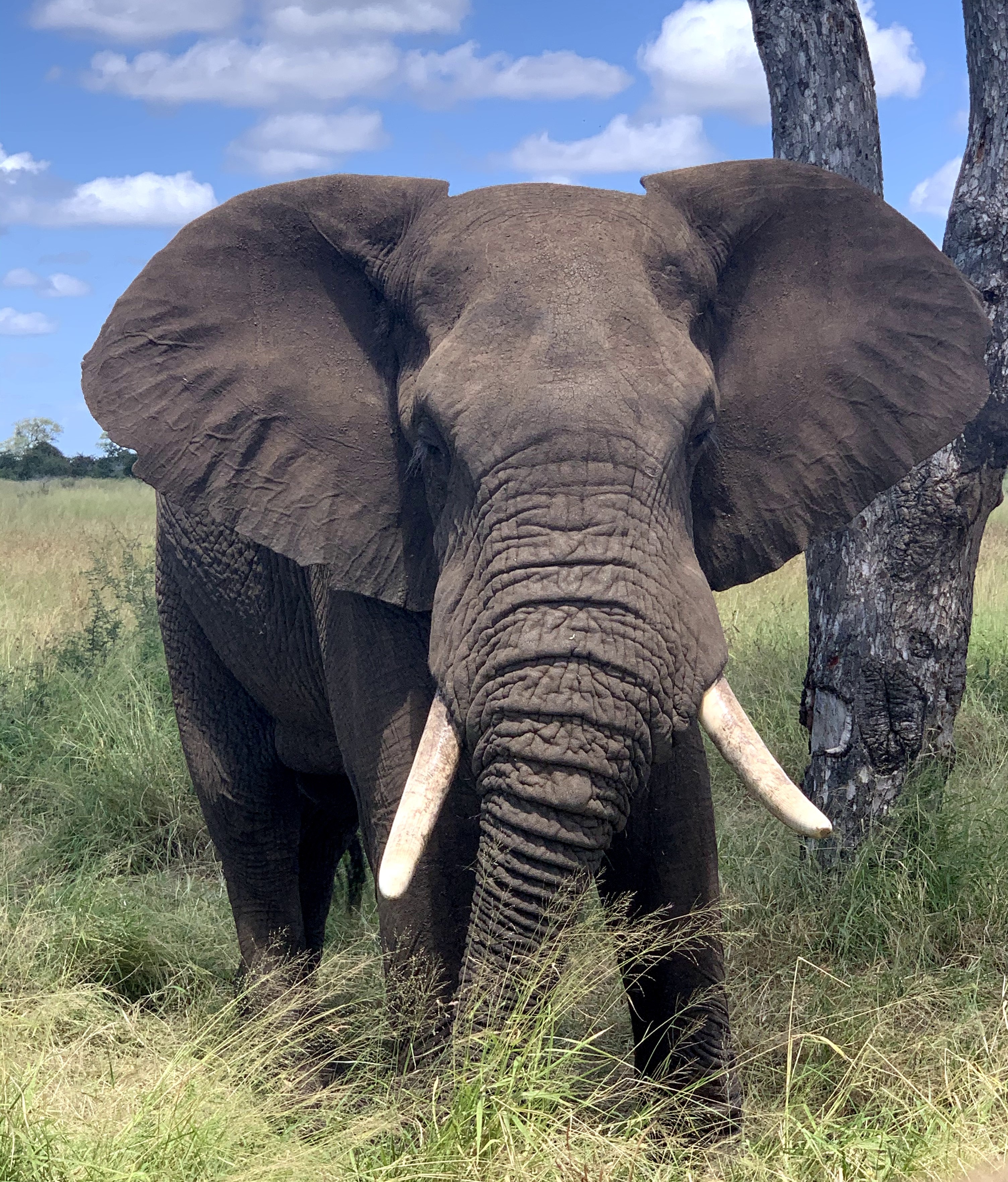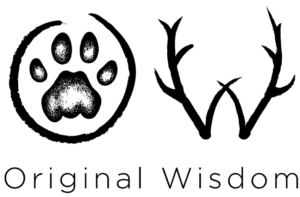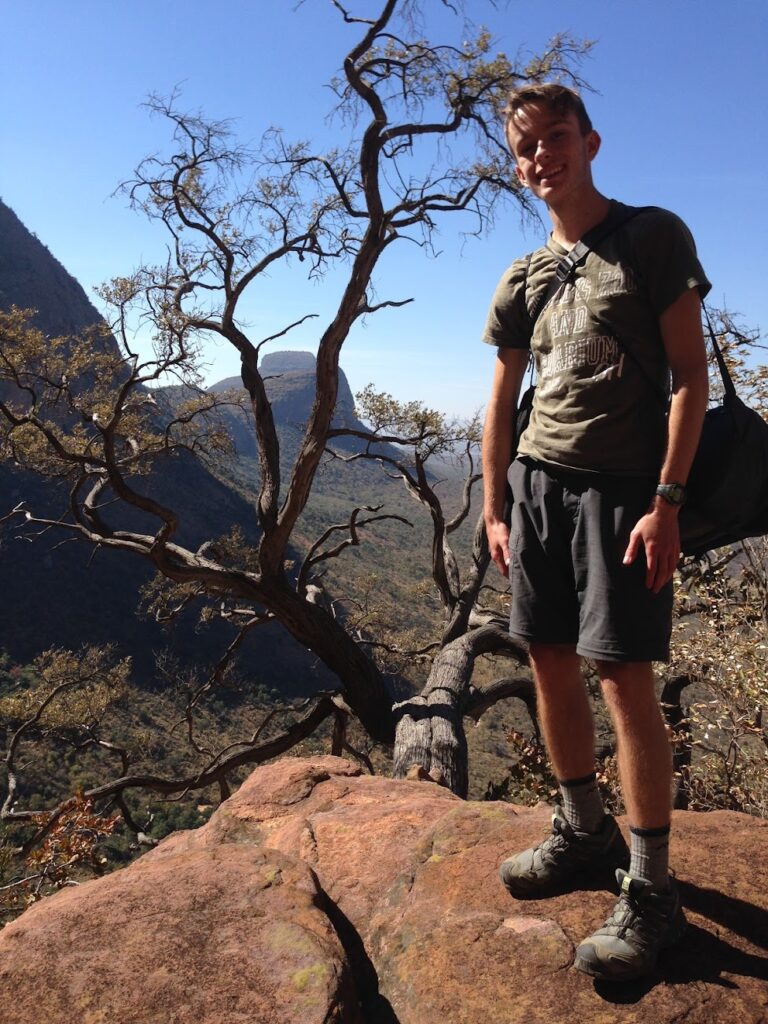The quote above is taken from my doctoral dissertation, where I interviewed people who described themselves as trackers. Historically, people tracked for food and safety. This happens less, these days, and tracking occurs in some countries as a form of employment, and in other places mostly for recreation. I conducted interviews with trackers from South Africa and North America, which were also mostly correlated with being full-time employed trackers or being a part-time recreational (or as only one aspect of their employment) trackers.
Descriptions from part-time trackers included more abstract benefits of tracking, such as increasing the general comfort level of a person with being outside in heat or cold, rain or sun, and sitting or kneeling on the earth and getting dirt underneath their fingernails. This increased physical comfort level, combined with an intensive experience that familiarizes people with how to recognize things around them, initiates a physiological-psychological connection between people and nature that is accelerated by a developing sense of curiosity. Recognition and curiosity become a circular route that draws people into more discoveries, and this familiarity with their surroundings promotes greater personal value for the well-being of wild things and wild spaces.
Full time South African trackers interviewed rarely expressed a personal value for or connection with nature. They did, however, frequently cite a measure of respect, especially for dangerous animals, as a criterion for expert tracking. Respect, in these cases, required enough physical experience in the bush to become comfortable, but not unconcerned, with the practice of walking alone and occasionally accidentally bumping into potentially dangerous animals. In part, this respect also came from stories, both real and imagined, of how wild animals can kill people. The following two stories illustrate the different ways that myth and fact have been passed on and facilitate respect. Take, for example, the following story from another tracker in South Africa:
“We live next to a game reserve. There’s a fence like our fence here. One day one of the elephants broke that fence and go into the village because they saw the watermelon at our village. People used to just plant watermelon. They saw them while they were inside the fence, then he broke the fence and go outside. Because he wanted the watermelon [laughter]. Ate that watermelons, and when he finished that watermelons then he is going straight away our village. So, the people of our village they see him heading away. They wanted it to be at our village because they knew when the rangers got it outside of the fence, they used to kill it. So, they wanted to get meat. So, they tried to turn the elephant come back to our village, while one of my cousins was following them. And he weren’t aware that the elephant is coming back. And he met with the elephant on their way. And elephant chased him because he was already angry. So, he just managed to catch him, and throw him up. And when he comes down, he just broke his legs separately, and break his head by his foot. And he died from there. What I explained about animals like the elephant. They are so relaxed, when we respect them, they respect us. At our game drive, we can just watch, and you can some way find that he’s just here. And they don’t know about it because we don’t provoke him, we just leave him, just like that, until he goes back. But, throw something like a rock to him or something like that we can make him angry. So, he can become angry and just try to charge us. So that is what happened, the elephant get angry, then killed.”
In the first story, the tracker expresses frustration about myths people in his village have about elephants and lions. It illustrates that misinformation can be passed from one person to another, just as easily as facts. Even though he spends time with these animals, both in a vehicle and on foot, every day, the villagers don’t believe his stories. They do not have the same respect that he does, coming from his experience on the land, following their tracks and interacting with these animals. They are fearful because they don’t have the same experiences to draw conclusions and comfort from, so they feel unsafe, under any circumstances where an elephant or lion is present. Their lack of knowledge leads to discomfort and disconnect from nature, while his experience leads him to respect the animals and feel comfortable, but not complacent, around them.
In the second story the tracker described a horrible situation where the villagers angered an elephant, who then killed his cousin. Hearing stories like this makes it more understandable why people might fear elephants and prefer the safety of the village or civilization to that unpredictability of wild animals in nature. However, the tracker makes sure to point out that under circumstances where people respect elephants, the elephants also respect people. This knowledge comes directly from his experience, on-the-job, tracking and interacting with, and respecting elephants.
What are your thoughts? Why do you track, where do you practice, and what are the dangers you face?

(My Ph.D. dissertation is available for free to download on the Tracker Mentoring website under my bio on the “About –> Tracker Mentoring” page, if you care to dive deeply.
If you like this, please share it, and tag us at #trackingisoriginalwisdom, #trackermentoring, #natureguidetraining, #cybertracker , and #trackercertification
<strong>Download Original Wisdom’s recommended reading list for trackers by signing up for our newsletter!</strong>
<strong>Once the sign-up form has been submitted, you will be re-directed to the download page.</strong>
Our recommended reading list is specific to Southern Africa and North America, but, a good tracking book is helpful in any region as a starting point to learn how to look at track morphology and animal behavior.
[contact-form-7 id=”2892″ title=”Subscribe to the newsletter”]
<h1><strong>Interested in online and correspondence tracking courses? Visit us at </strong><a href=”https://trackermentoring.com/”><strong>TrackerMentoring.com</strong></a><strong>!</strong></h1>

